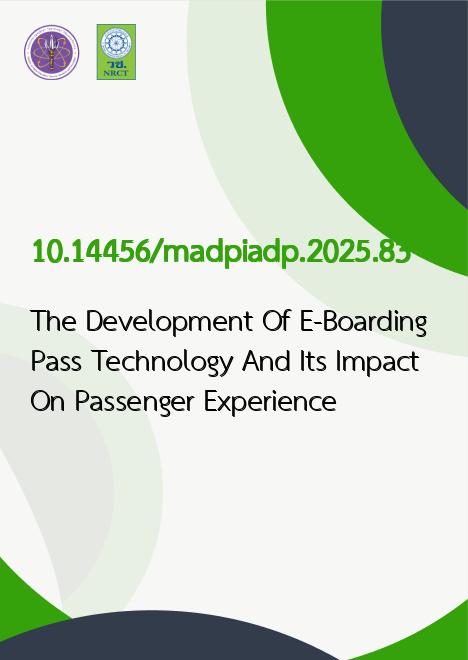
|
The Development Of E-Boarding Pass Technology And Its Impact On Passenger Experience |
|---|---|
| รหัสดีโอไอ | |
| Creator | Amphon Khamwilai |
| Title | The Development Of E-Boarding Pass Technology And Its Impact On Passenger Experience |
| Contributor | Panrada Nimitphuwanon, Omasharif Pannopapha, Thanakorn Khamchang, Prachaya Srisat |
| Publisher | DR.KET Institute of Academic Development and Promotion |
| Publication Year | 2568 |
| Journal Title | Modern Academic Development and Promotion Journal |
| Journal Vol. | 3 |
| Journal No. | 2 |
| Page no. | 1000-1018 |
| Keyword | E-boarding pass, Technology acceptance, Passenger experience, Travel convenience, Satisfaction |
| URL Website | https://so12.tci-thaijo.org/index.php/MADPIADP/ |
| Website title | https://so12.tci-thaijo.org/index.php/MADPIADP/ |
| ISSN | 2822-1095 |
| Abstract | This research article aims to: (1) examine the factors influencing passengers’ acceptance and use of e-boarding passes, (2) analyze the impact of e-boarding passes on the passenger experience in terms of convenience, speed, and satisfaction, and (3) assess the advantages and limitations of using e-boarding passes compared to paper boarding passes. This is a quantitative research study. Data were collected from 400 passengers traveling through Suvarnabhumi International Airport and Don Mueang Airport using a questionnaire as the research instrument. The data were analyzed using descriptive statistics (mean and standard deviation) and inferential statistics, including multiple regression analysis and ANOVA.The research findings revealed that 1) Key factors significantly affecting the acceptance and use of e-boarding passes include ease of use, perceived usefulness, and trust in the system. 2) The use of e-boarding passes positively influences the passenger experience by increasing convenience, speed, and overall satisfaction. 3) The advantages of e-boarding passes include convenience, time efficiency, and reduced resource consumption, while the limitations involve accessibility issues for some passenger groups unfamiliar with technology, as well as occasional system or connectivity problems. The findings of this study can be used to support the development of passenger service systems in the aviation industry, aiming to enhance operational efficiency and provide a better passenger experience in the digital era. |